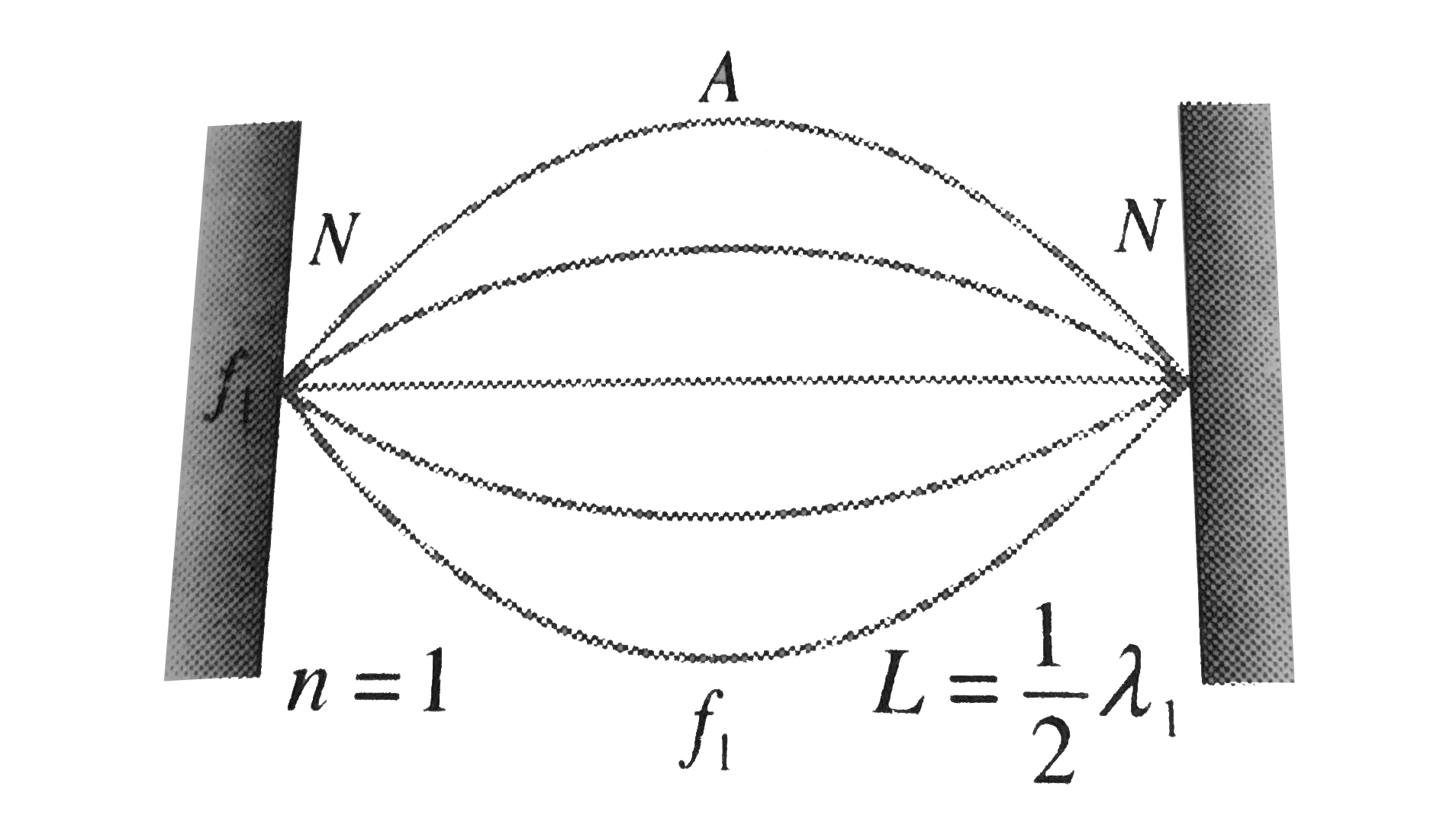A string vibrates in its first normal mode with a frequency of 220 vibrations /s. The vibrating segment is 70.0cm long and has a mass of 1.20g.
(a) Find the tension in the string.
(b) Determine the frequency of vibration when the string vibrates in three segments.
The tension should be less than 500N(~1001b) since excessive force on the four cello strings would break the neck of the instrument . If a string vibrates in three antinodes ( instead of one for the fundamental mode) , so the frequency should be three times grreater than the fundamental .
From the string's length , we can find the wavelength . We then can use the wavelength with the fundamental frequency to find the wavr speed . Finally , we can find the tension from the wave speed and the linear mass density of the string .
When the string vibrates in the lowest frequency mode , the length of string forms a standing wave where is L=λ/2 so the fundamental harmonic wavelength is λ=2L=2(0.700m)
=1.40m and the speed is
v=fλ=(220s−1)(1.40m)=308m/s
(a) . From the tension equation
v=√Tμ=√Tm/L
We get T=v2m/L
or T=(308m/s)2(1.20×10−3kg)0.700m=163N
(b). For the third harmonic , the tension , linear density and speed are the same , but the string vibrates in three segments . Thus , the wavelength is one - third of the fundamental wavelength .
λ3=λ1/3
From the equation v=fλ , we find that the frequency three times as high .
f3=vλ3=3vλ1=3f1=660Hz
The tension seems reasonable , and the third harmonic is three times the fundamental frequency as excepted . Related to part (b) , some stringed instrument players use a technique to double the frequency of a note by playing a natural harmonic , in effect cutting a vibrating string in half . When the string is lightly touched at its midpoint to form a node there , the second harmonic is formed , and the resulting note is one octave higher ( twice the original fundamental frequency ).


Similar Questions
A string vibrates in 5 segments to a frequency of 480 Hz. The frequency that will cause it to vibrate in 2 segments will be
View SolutionA tuning fork of frequency 512 Hz is vibrated with sonometer wire and 6 beats per seconds are heard. The beat frequency reduces if the tension in the string is slightly increased. The original frequency of vibration of the string is
View Solution
Knowledge Check
A one meter long string of mass 4.9×10−4 kg is held under a tension of 19.6 N. IF the string vibrates in one segment, then the frequency of vibration will be
A200 HzB100 HzC50 HzD400 Hz
A tunning fork is frequency 512Hz is vibrated with a sonometer wire and 6 beats per second as heard The beat frequency reduces if the tension in the string of slightly increased. The original frequency of vibration of the string is
View SolutionA tuning fork of frequency 512 Hz makes 4 beats//s with the vibrating string of a piano. The beat frequency decreases to 2 beats//s when the tension in the piano string is slightly increased.The frequency of the piano string before increasing the tension was
View SolutionTo increase the frequency by 20 %, the tension in the string vibrating on a sonometer has to be increased by
View SolutionA string 25cm long and having a mass of 2.5gm is under tension. A pipe closed at one end is 40cm long. When the string is set vibrating in its first overtone and the air in the pipe in its fundamental frequency, 8 beats per second are heard. It is observed that decreasing the tension in the string decreases beat frequency. If the speed of sound in air is 320m/s, find the tension in the string.
View SolutionA string 25cm long and having a mass of 2.5gm is under tension. A pipe closed at one end is 40cm long. When the string is set vibrating in its first overtone and the air in the pipe in its fundamental frequency, 8 beats per second are heard. It is observed that decreasing the tension in the string decreases beat frequency. If the speed of sound in air is 320m/s, find the tension in the string.
View SolutionA wire stretched between two rigid supports vibrates in its fundamental mode with a frequency of 45Hz. The mass of the wire is 3.5×10−2kg and its linear mass density is 4.0×10−2kgm−1. What is (a) the speed of a transverse wave on the string , and (b) the tension in the string?
View SolutionA string of mass 'm' and length l, fixed at both ends is vibrating in its fundamental mode. The maximum amplitude is 'a' and the tension in the string is 'T'. If the energy of vibrations of the string is π2a2TηL. Find η
View Solution
